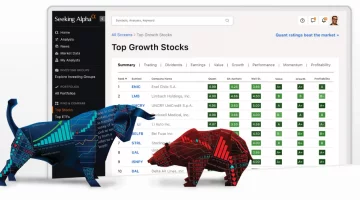2025 Mortgage Forecast: How Will Trump’s Presidency Affect Your Interest Rate?

As Donald Trump embarks on his second term as President, economic policies and market trends are expected to shift in ways that will likely impact interest rates in the housing and mortgage sectors. For prospective homebuyers and homeowners considering refinancing, 2025 could bring unique opportunities as well as potential challenges.
This article explores the key factors likely to influence mortgage rates over the coming year, examines the potential impact of Trump’s economic policies on the housing market, and offers insights on what these changes might mean for your interest rate.
An Overview of Trump's Economic Policy Focus
In his previous term, Trump emphasized tax cuts, deregulation, and pro-growth policies aimed at boosting business and household income. His second term could see a continuation of these policies, with new strategies likely to focus on:
- Tax reform and deregulation: Lowering taxes and reducing regulations could stimulate business growth, increase employment, and drive up household income. These policies may enhance consumer spending power, which could, in turn, affect inflation and prompt adjustments to interest rates.
- Inflation control: A pro-growth economic agenda often risks raising inflation levels as consumer demand and business activity increase. The Federal Reserve closely monitors inflation, and any signs of a sustained increase may lead to a rise in short-term interest rates to prevent economic overheating.
- Economic stimulus programs: In a post-pandemic economy, Trump’s administration may introduce stimulus measures to boost recovery in specific sectors, which could add complexity to interest rate forecasts.
These policies will create a backdrop against which mortgage rates are likely to fluctuate. As the economy expands, homeowners and buyers will need to keep a close eye on interest rate trends to make informed mortgage decisions.
2025 Mortgage Rate Forecast: Key Influences
Mortgage rates are shaped by a mix of economic indicators, Federal Reserve policies, and market trends. Here are some of the main influences to watch in 2025:
1. Federal Reserve’s Interest Rate Policy
The Federal Reserve plays a significant role in determining mortgage rates through its management of the federal funds rate, which directly influences short-term interest rates. If the Fed raises the federal funds rate to curb inflation, mortgage rates are likely to rise as well, which would increase borrowing costs for homeowners and buyers.
On the other hand, if inflation remains controlled or economic growth slows, the Fed might opt to keep rates stable or even reduce them to support borrowing and spending. Trump’s focus on economic growth may push the Fed to adopt a more cautious approach, raising rates only if necessary.
2. Inflation and Economic Growth
Inflation is one of the biggest indicators to watch when predicting mortgage rate trends. Pro-growth policies, tax cuts, and a strong labor market could create conditions for rising inflation, putting upward pressure on mortgage rates. Conversely, if inflation stays in check, mortgage rates may remain lower, benefiting homebuyers and those seeking to refinance.
Potential Impacts on FHA, VA, and USDA Loan Rates
Interest rates for government-backed loans, such as FHA, VA, and USDA loans, typically mirror trends in the broader mortgage market. However, Trump's policies could directly impact these loan programs:
- FHA Loans: FHA loans are popular with first-time homebuyers due to their lower down payment requirements. If interest rates rise, FHA loans may become slightly more expensive, though continued government support for affordable housing may mitigate the overall impact.
- VA Loans: VA loans, reserved for eligible veterans and military members, could see rate adjustments depending on the economic environment. Rising rates may affect VA borrowers’ purchasing power, though VA loans tend to offer lower rates than conventional mortgages.
- USDA Loans: USDA loans support rural homeownership with favorable terms, including low interest rates. Should rates climb, USDA loans could become slightly less attractive, though they will likely remain a valuable option for rural homebuyers.
These government-backed loans may still provide valuable benefits in a changing market. Homebuyers considering FHA, VA, or USDA loans can explore rate options at trusted mortgage providers like DSLD Mortgage.
Refinancing in 2025: Should Homeowners Act Now?
If mortgage rates are poised to rise in 2025, refinancing early in the year could be a strategic way to secure lower rates and reduce monthly payments. Here are some factors homeowners should consider when deciding to refinance:
- Locking in a lower rate: Homeowners with adjustable-rate mortgages (ARMs) or higher fixed-rate loans could benefit by refinancing at today’s comparatively low rates, protecting themselves from potential increases.
- Cash-out refinancing options: With rising home values, many homeowners have accumulated equity. Cash-out refinancing allows them to access this equity, which can be used to pay down debt, fund home improvements, or invest elsewhere.
- Shortening the loan term: Refinancing from a 30-year to a 15-year mortgage term, for instance, could help homeowners build equity faster and save on interest costs, even if monthly payments are higher.
Given the potential for rate increases, refinancing sooner rather than later may offer savings and greater financial security. Homeowners who work with a knowledgeable lender, such as DSLD Mortgage, can ensure they secure the best possible terms.
Housing Market Outlook in 2025
Trump’s economic policies could also shape the broader housing market. Tax incentives for businesses may support job growth and income stability, which can drive homebuyer demand. Here’s what prospective buyers and investors should consider for the year ahead:
- Rising demand in growing areas: Job creation and economic growth could increase demand in urban and suburban areas where housing is already limited. This could drive up home prices, affecting affordability but potentially increasing the value of existing homes.
- Changes in property taxes: Potential tax reforms may influence property tax structures, affecting how much homeowners pay annually. It’s important for homeowners and prospective buyers to account for this when planning long-term home budgets.
- New construction trends: Trump’s focus on deregulation may support new housing developments by simplifying building codes and reducing costs. Increased housing supply could help moderate price increases in some markets, particularly where demand outpaces available housing.
Should You Buy a Home in 2025?
Interest rates will be crucial for those considering homeownership in 2025. Here are some things to keep in mind if you’re planning to buy:
- Get pre-approved early: Mortgage rates can change quickly, and a pre-approval locks in a rate for a set period, offering you a buffer as you search for the right home.
- Work with a knowledgeable lender: A lender experienced in navigating market trends can help you evaluate options and find the best mortgage type and rate for your needs.
- Consider locking in a fixed rate: If rates are trending upward, choosing a fixed-rate mortgage can protect your monthly payments from future increases, providing long-term stability.
Final Thoughts: Navigating the Mortgage Market in 2025
As Trump’s presidency brings new economic policies, mortgage rates will be influenced by factors including Federal Reserve actions, inflation, and tax reforms. For homeowners considering refinancing, early action may secure favorable rates. Prospective homebuyers should also keep a close eye on rate trends to make the most of opportunities in 2025.
With careful planning and the right mortgage strategy, homeowners and buyers can navigate the evolving 2025 mortgage landscape confidently, making the most of a year that promises to be dynamic for real estate and finance alike.
More to Read:
Previous Posts:








